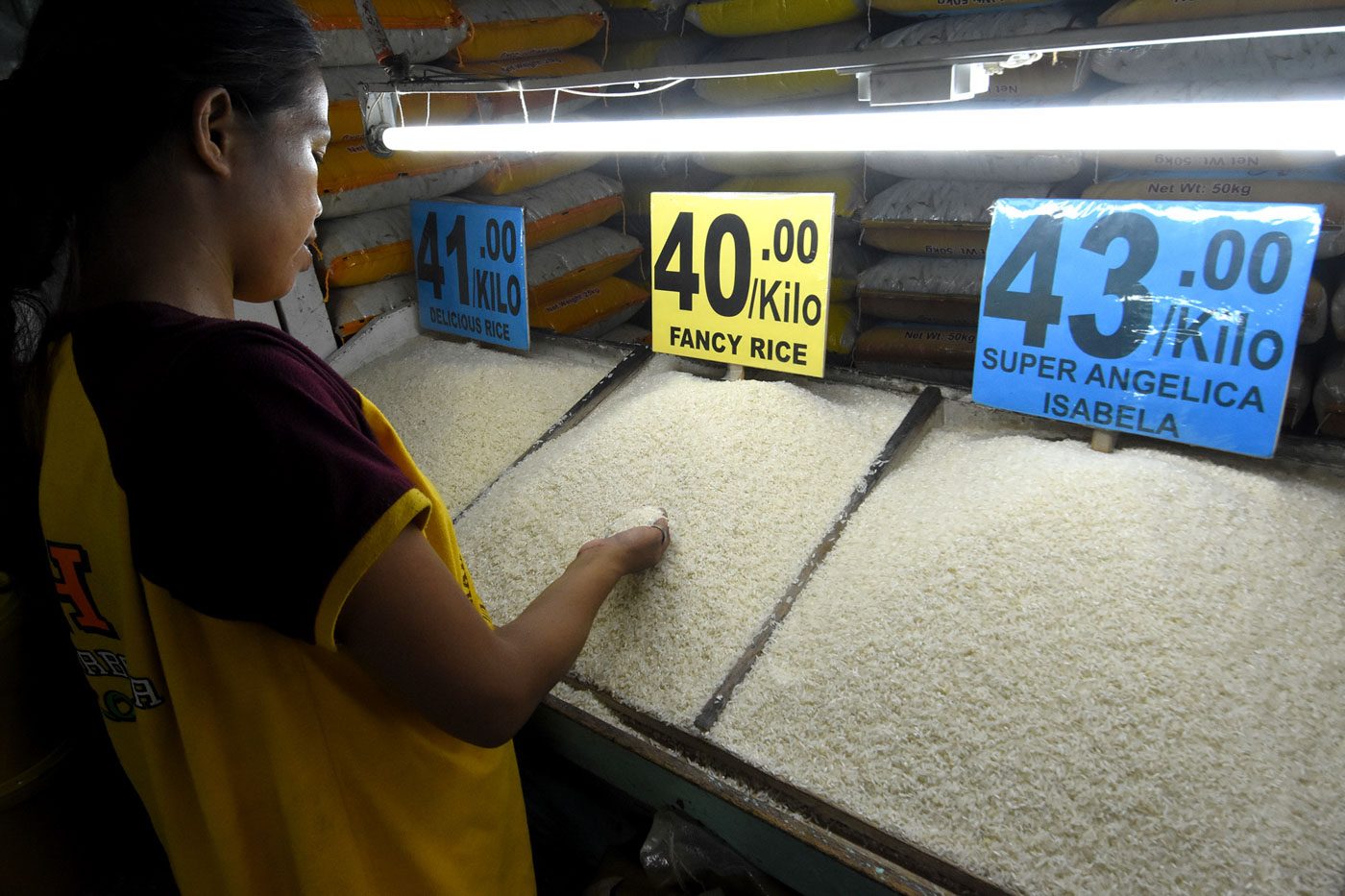SUMMARY
This is AI generated summarization, which may have errors. For context, always refer to the full article.

MANILA, Philippines – The House of Representatives approved on 2nd reading the bill seeking to replace quantitative restrictions on rice imports with the imposition of tariffs or taxes.
On Tuesday, August 7, lawmakers gave their nod to House Bill (HB) No. 7735 or the Revised Agricultural Tariffication Act through viva voce voting or a vote of ayes and nays.
ANAC-IP Representative Jose Panganiban, chairperson of the House commitee on agriculture and food, sponsored the bill on second reading at the plenary.
Rice tariffication is one of the means identified by Speaker Gloria Macapagal Arroyo and President Rodrigo Duterte’s economic managers that would help address soaring inflation, which hit 5.7% in July based on the latest data from the Philippine Statistics Authority.
Under HB 7735, the National Food Authority (NFA) would have the sole authority to undertake direct rice importation to ensure food security and maintain national buffer stocks. The NFA would also have the power to allocate import permits and issue guidelines for rice and corn importation.
The same bill would set the bound rate for rice to the following:
- 40% most favored nation (MFN) rate for importation within the metric ton maximum access volume from non-members of the Association of Southeast Asian Nations (ASEAN) and the World Trade Organizations
- 180% MFN out quota tariff rate
- The import duty rate commitments of the Philippines in the ASEAN Trade in Goods Agreement will be applied for imported rice from ASEAN member states.
A Rice Competitiveness Enhancement Fund would also be created, which shall consist of all duties duties collected from rice imports. The Rice Fund will be broken down as follows:
- 20% for the establishment of a rice endowment fund
- 20% for credit subsidy or grants to modernize and increase production of rice farms
- 20% for rice crop finance
- 20% for postharvest facilities, logistics, storage, transportation facilities, and infrastructure projects
- 10% for rice scholarships and vocational education
- 10% for research and development
Socioeconomic Planning Secretary Ernesto Pernia previously said replacing the quantitative restriction on rice with tariffs will lower rice prices and increase revenues for agricultural programs like crop diversification.
“To the extent that rice importation will be liberalized, the private sector will start importing. The more private sector imports, the supply of rice enlarges and therefore the price of rice goes down,” said Pernia.
Now that HB 7735 has been approved on 2nd reading, the bill will have to be passed on 3rd and final reading to hurdle the House of Representatives. The Senate version of the measure remains pending at the agriculture and food panel. – Rappler.com
Add a comment
How does this make you feel?
There are no comments yet. Add your comment to start the conversation.